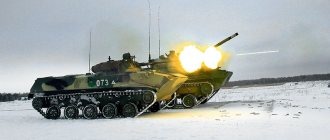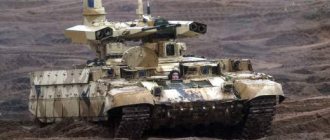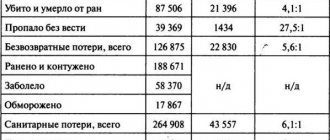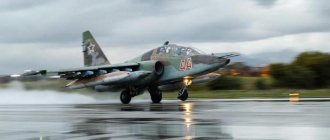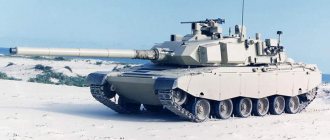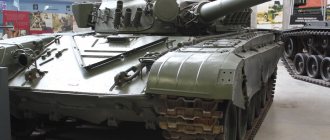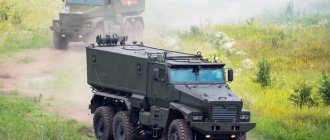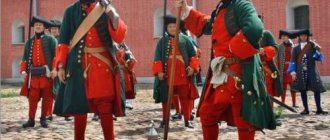The T-80 is a Soviet-made main battle tank. It is the first tank in the world to be equipped with a single gas turbine power plant. It has been in service with the Soviet Army since 1976. The first production samples, which were created on the basis of the T-64 in SKB-2, were produced at the Kirov plant in Leningrad. They are part of the Armed Forces of such states as South Korea, Ukraine, Russia and others. The T-80U modification was manufactured at, and the T-80UD at the Kharkov Malyshev plant. In turn, the T-80UD also has modifications - Ukrainian BM "Oplot" and T-84.
Photos
Victories in the virtual space
Gamers associate the T-80 tank with the confrontation between the USSR and the USA. In most games where these superpowers clash, the main armored force of the Soviet country is this vehicle. New “Free to play” games, such as “Armored Warfare” also promise this example of Soviet equipment at the end of the leveling up branch. It is popular among military strategy developers.
The T-80 became the final chord of Soviet designers who worked on creating the technology for 10 years.
In 2015, the government of the Russian Federation decided to replace this model of equipment with the modernized T-72B-3. The reason for the replacement is the futility of modernizing the tank.
Instead, the troops will also receive the latest Armata tanks. This cannot be said that this is the end of the T-80, because the replacement will occur gradually, and the equipment will serve its homeland for a long time. Especially in the cold regions of Russia, where the gas turbine engine is a good ace in the hole. After all, for a tank, 42 years is the prime of life, and not the end of life.
Story
The debut "Kirov" gas turbine tank of the new generation, designated "object 219 sp 1", was produced in 1969 and was externally similar to the experimental T-64T gas turbine tank manufactured in Kharkov. The machine was equipped with something developed at the NPO named after. V.Ya. Klimov, GTD-1000T engine. The development with the designation “object 219 sp 1” differed from its predecessor prototype by significant changes to the chassis. In particular, support and support rollers, new guide and drive wheels, hydraulic shock absorbers, rubber-coated tracks and torsion shafts with improved characteristics were developed. The shape of the tower has also changed. This tank was combined with the T-64A by ammunition, a cannon, a loading mechanism (not the same as that found on the T-72 and its modifications), armor protection, as well as individual systems and components.
T-72B3 with KDZ
Tank biathlons 2013-2017 were remembered for the appearance of T-72B3 samples with additional modifications based on testing experience, initial operation in units and participation in combat operations in hot spots. In addition, individual copies of the modernized vehicles took part in a dynamic display at the Alabino training ground, while others were exhibited along the path of spectators to the stands for more detailed acquaintance. According to military personnel who gave explanations to the public at the exhibition samples, the engine power was increased to 930 hp, and in some cases even higher.
© Photo by the author
On static sites of the International Military and Technical Forum "Army" 2017-2018. T-72B3 with KDZ was exhibited.
On static sites of the International Military and Technical Forum "Army" 2017-2018. T-72B3 with KDZ was exhibited. The T72B3 with KDZ differed from the vehicles participating in tank biathlons in appearance: different side screens, additional protection in the form of bars, plus bags hung on the sides of the tank for better protection against cumulative weapons.
According to the data table for it, a specific copy of the T-72B3 with KDZ was equipped with a V-84M engine with a power of 840 hp, while the standard T-72B (B1) was equipped with a V-84-1 with a similar indicator, and the original T- 72 (no suffix) - B-46 with 780 hp.
Performance characteristics
4.1 Dimensions
- Case length, mm: T-80 – 6780; 6982; T-80U – 7012; T-80UD – 7020
- Length with gun forward, mm: T-80 – 9656; T-80B (T-80BV) – 9651; T-80U – 9556; T-80UD – 9664
- Case width, mm: T-80 – 3525; T-80B (T-80BV) – 3582; T-80U – 3603; T-80UD — 3755
- Tower roof height, mm: T-80 – 2300; T-80B (T-80BV) – 2219; T-80U, T-80UD - 2215
- Ground clearance, mm: T-80, T-80B (T-80BV), T-80U – 451; T-80UD – 529.
4.2 Booking
- Type of armor: anti-ballistic, cast and rolled combined and steel
- Dynamic protection: T-80U, T-80UD – Contact-5
- Active protection: T-80UD - “Curtain”.
4.3 Armament
- Gun brand: T-80 - 2A46-1; T-80B (T-80BV) – 2A46-2/2A46M-1; T-80U – 2A46M-1/2A46M-4; T-80UD – 2A46M-1
- Gun type: smoothbore gun
- Gun caliber: 125 mm
- Barrel length, calibers: 48
- Gun ammunition: T-80 – 40; T-80B (T-80BV) – 38; T-80U, T-80UD - 45
- HV angles, degrees: −5…+14°
- Firing range, km: ATGM: 5.0, BOPS: 3.7
- Sights: night periscope TPN-3-49, optical sight-rangefinder TPD-2-49
- Machine guns: 1 × 7.62 mm PKT, 1 × 12.7 mm NSVT
- Guided weapons: T-80B (T-80BV) - 9K112-1 “Cobra” / 9K119 “Reflex”; T-80U - 9K119 “Reflex” / 9K119M “Reflex-M”; T-80UD - 9K119 "Reflex".
4.4 Mobility
- Engine brand and type: T-80 - GTD-1000T (gas turbine); T-80B (T-80BV) - GTD-1000TF (gas turbine); T-80U - GTD-1000TF/GTD-1250 (gas turbine); T-80UD – 6TD (diesel)
- Engine power, l. pp.: T-80, T-80UD: 1000; T-80B (T-80BV): 1100; T-80U – 1100/1250
- Highway speed, km/h: T-80, T-80B (T-80BV), T-80U – 70; T-80UD - 60
- Speed over rough terrain, km/h: T-80 – 50; T-80U - 60
- Cruising range on the highway, km: T-80, T-80B (T-80BV) – 500; T-80U – 450; T-80UD — 560
- Cruising range over rough terrain, km: 250
- Specific power, l. s./t: T-80 - 23.8; T-80B (T-80BV) - 25.8 (25.17); T-80U - 21.74/27.2; T-80UD - 21.7
- Suspension type: individual torsion bar
- Specific ground pressure, kg/cm²: T-80 - 0.83; T-80B (T-80BV) - 0.865; T-80U - 0.93; T-80UD - 0.924
- Climbability, degrees: 32°
- Wall to be overcome, m: 1.0
- Ditch to be overcome, m: 2.85
- Fording capacity, m: 1.2 (1.8 with preliminary preparation; 5.0 with OPVT).
4.5 Other parameters
- Combat weight, t: T-80 – 42; T-80B (T-80BV) - 42.5 (43.7); T-80U, T-80UD – 46
- Layout scheme: classic
- Crew, people: 3.
Design of the T-80 tank
The internal layout of the main T-80 tank is classic, consisting of three compartments. The control compartment is located in the front part of the hull; the driver’s workplace is located here. Behind the seat in the bottom of the body there is an emergency exit hatch. In 1984, a “mine-resistant” mounting of the driver’s seat to the beam was introduced instead of mounting to the bottom.
Tank T-80UD
The fighting compartment is located in the middle part of the tank, includes a turret with a 125-mm smoothbore gun 2A46-1, equipped with a two-plane weapon stabilizer 2E28M2 and a hydroelectromechanical automatic loader of the same design as on the T-64 tank, and a cockpit located in the hull, docked with a tower. The loading mechanism is located in the cockpit, the tank commander is located to the right of the gun, and the gunner is to the left. To the right of the gun there is a coaxial PKT machine gun, an R-123M radio station and an M3 control panel. Above the tank commander's seat in the turret there is a commander's cupola with a hatch. Behind the walls of the cabin there is a ring conveyor of the loading mechanism.
The gun's ammunition consists of 40 rounds of separate cartridge loading with a partially burning cartridge case. The range of a direct shot with a sabot projectile at a tank-type target is 2100 m. The rate of fire is 6 - 8 rounds/min., when loading manually it is reduced to 1 - 2 rounds/min. To fire from a cannon, an optical stereoscopic sight-rangefinder TPD-2-49 is used. The sight has independent stabilization of the field of view in the vertical plane and allows you to accurately determine the range to the target within the range of 1000 - 4000 m. Data on the range to the target is automatically entered into the sight. Corrections for the speed of the tank and data on the type of selected ammunition are also automatically introduced. For shooting at night, the TPN-1-49-23 sight is used.
The power compartment is located in the rear of the tank hull. It has a gas turbine engine installed longitudinally. Power is output to the shafts of the onboard gearboxes from both ends of the engine output gearbox. Each final drive is mounted in a block with a coaxial planetary final drive that carries the drive wheel.
The T-80 tracks have a rubberized treadmill, and the road wheels are also rubberized. Suspension - individual, torsion bar, with non-coaxial torsion shafts, with hydraulic telescopic shock absorbers on 1, 2 and 6 suspension units.
The most interesting feature of the T-80 tank is its gas turbine engine. It is made according to a three-shaft design with two mechanical independent turbochargers and a free turbine. The main components of the engine are low and high pressure centrifugal compressors, combustion chamber, axial compressor turbines, axial power turbine, exhaust pipe, drive boxes and gearbox. The roof of the power compartment is removable and consists of a front fixed part and a rear lifting part, which is connected to the front using hinges and a torsion bar. The roof opens with the effort of one person and is locked in the raised position with a tie. In the front part of the roof there are entrance blinds, closed at the top with removable metal mesh.
Modification T-80UK
Modifications
- 219 joint venture 1 - modification of the T-64A with an integrated gas turbine engine GTD-1000T
- 219 sp 2 - pre-production sample with a new chassis
- 219 joint venture 2 - main battle tank T-80.
- 219A - experimental main tank T-80A. Development was carried out simultaneously with Object 478. Subsequently it was supplemented with mounted dynamic protection.
- 219AS is the main battle tank of the T-80U. Equipped with a 2A46M-1 cannon; smoke grenade launch system 902B “Tucha”; PPO 3ETS13 “Rime”; combined armor with dynamic built-in protection; weapon control complex 1A45 "Irtysh" (electronic BV, PRNA TPN-4S, laser sight-rangefinder 1G46, night combined sight TPN-4 "Buran-PA", stabilizer 2E42) and KUV 9K119 "Reflex". Subsequently, the KUV 9K119M “Invar” and GTD-1250 engines were used
- 630A - the main tank of the T-80UK. Command version of the T-80U. Equipped with an Agava-2 thermal imager; radio stations R-163K and R-163U, the Shtora-1 system, the TNA-4 navigation system, an improved atmospheric sensor, an autonomous power plant AB-1-P28, a system for remote detonation of HE shells
- T-80UE - version of the T-80UM, intended for Greece; equipped with improved controls and hydrostatic transmission
- 219AM-1 - the main tank of the T-80UA. An improved version of the T-80U.
- 219AS-M - the main tank of the T-80UM. An improved version of the T-80U, equipped with: radio-absorbing coating, R-163-50U radio station, Agava-2 thermal imager
- 219AS-M1 - the main tank of the T-80UM1 "Bars". T-80UM variant, equipped with a GTD-1250G engine, a 2A46M-4 cannon, an Arena-E active protection complex, TVN-5, R-163UP, Shtora-1, R-163-50U, an air conditioning system, " Velizh"
- 640 - main experimental battle tank T-80UM2
- 291 - equipped with a GTA-18 power auxiliary unit, fire-fighting equipment of PPO "INEY", a driver's night device TVN-5 "Mango", an Agava-2 thermal imaging sight, a 2A46M-4 125-mm caliber gun, a 1A45M KUO (IUS 1B558 , STV-2E42M, PDPN-1G46M) and a new blade for self-digging, included in the protection scheme. The RPZ-86M radio-absorbing coating was also used. First, the Progress-2 thermal imaging sight (T01-P05) was installed on the tank, and subsequently the T01-K05 Buran-M. The loading mechanism was adapted to accommodate BPS projectiles with a length of 750 mm
- 219R is the main battle tank of the T-80B. Equipped with a 2A46-2 cannon, a 902A “Tucha” smoke grenade launch system, a 9K112-1 “Cobra” KUV and a 1A33 fire control system (it includes a 1V517 BV, a 2E26M stabilizer, a set of sensors, a 1G43 shot resolution unit, and a 1G42 laser sight-rangefinder). The turret's armor has been strengthened. Subsequently it was equipped with a GTD-1000TF engine, a turret unified with the T-64B and a 2A46M-1 gun
- 219RV is the main battle tank of the T-80BV. T-80B equipped with dynamic mounted protection "Contact"
- 219AS-1 - the main tank of the T-80UE-1. Improved T-80BV. Equipped with a modernized 1A45-1 fire control system and a turret from a decommissioned T-80UD. In addition, several more updates have been installed
- 219M - improved T-80BV
- 219RD - experimental modification of the T-80B, equipped with an A-53-2 (2V-16-2) diesel engine
- 219E - experimental modification of the T-80B, equipped with the Shtora-1 electro-optical active protection system against precision weapons
- 630 - main tank T-80BK. Command version of the T-80B, equipped with additional installation of radio and navigation equipment
- 644 - experimental modification of the T-80, equipped with a V-46-6 diesel engine
- 478 is an experienced main tank. T-80 chassis, Object 476 turret, 6TD diesel engine
- 478M - main tank project. Improved "Object 478". Equipped with a 12CHN diesel engine and the “Shater” active protection complex
- 478B - main tank T-80UD "Beryoza". Equipped with a remote-controlled anti-aircraft machine gun mount; diesel engine 6TD and mounted DZ. Then - the built-in remote sensing.
- 478БК - experimental modification of the T-80UD, equipped with a welded turret.
- 478D - an experimental main tank based on the T-80UD, equipped with the Ainet missile control system
- 478DU is a Ukrainian experimental main tank based on the 478D object with an improved chassis. Developed in Ukraine.
- 478DU1 - version of the T-80UD for export. Developed in Ukraine
- 478DU2 - the main tank of the T-84. Modernized T-80UD, equipped with a new remote sensing device and the Shtora-1 system. Developed in Ukraine
- T-84-120 “Yatagan” - a version of the T-84 for export to Turkey, equipped with a 6TD-2 engine, a 120 mm caliber cannon, a built-in Knife PD and a welded turret with an AZ in the aft niche. Developed in Ukraine
- 478DU9 - the main tank of the T-84U. Modernized T-84. Developed in Ukraine
- 478DU10 is the main tank of the Oplot BM. Modernized T-84U. Developed in Ukraine
- 478DU3 - modernized T-80UD. Developed in Ukraine
- 478DU4 - modernized T-80UD, equipped with an improved gearbox Developed in Ukraine
- 478DU5 - modernized T-80UD, equipped with air conditioning. Developed in Ukraine
- 478DU6 - modernized T-80UD. Developed in Ukraine
- 478DU7 - modernized T-80UD. Developed in Ukraine
- 478DU8 - modernized T-80UD. Developed in Ukraine.
T-72B3
Speaking at the end of the 2020 Army Games, Russian Defense Minister Army General Sergei Shoigu said that “the Games have seriously contributed” to the process of technical improvement of the original T-72 line. First, the crews participating in the competition competed in T-72B (B1) vehicles. Then a modified version with the suffix “B3” appeared at the test site. “The technical solutions used on the modification of the T-72B3 made it possible to increase mobility, reliability and ergonomics,” noted the head of the military department.
The search for the optimal appearance of the modernized version took almost a decade. The first samples of the T-72B3 appeared in public in 2011. Over the next couple of years, vehicles of a similar appearance entered combat units. They differed from the original T-72B1 in the 2A46M-5 gun with improved ballistics and service life. The automatic loader was modified to use new shells with better armor penetration.
© Photo by the author The first samples of the T-72B3 appeared in public in 2011.
Visibility and shooting accuracy were increased thanks to the Sosna-U multi-channel sight-rangefinder with a thermal imaging camera and automatic target tracking (LKU missiles), as well as a digital ballistic computer with a weather sensor. The gunner can also use a backup 1A40-4 rangefinder sight. The tank commander has a combined (day and night) electro-optical device TKN-3MK.
To increase resistance to enemy weapons, Kontakt-5 dynamic protection units are installed on the turret and hull of the tank. Outdated radio communications equipment was replaced with VHF radio stations R-168-25U-2 from the Aqueduct complex.
In service
- USSR - entered service with the states formed after 1991
- Russia – The Russian Army as of 2013 operates 4,000 T-80U and T-80BV. 3,000 vehicles are in storage. It is planned to abandon tanks by 2015
- Coastal troops of the Russian Navy - as of 2013, 160 T-72, T-55M and T-80 tanks
- Angola – unspecified number of T-80s
- Belarus - 69 T-80B
- UK - some T-80U acquired undiscovered for strategic research
- Egypt - 20 T-80U and 14 T-80UK
- Yemen - 66 T-80
- Cyprus - 82 T-80U
- Republic of Korea - 80 T-80U
- Pakistan - 320 T-80UD
- USA - 4 T-80UD, 1 T-80U
- Uzbekistan - unspecified number of T-80BV
- Ukraine - 165 T-80 in storage.
How the legendary car was created
In fact, the roots of the creation of the T-80 go back to the distant 1942-1948 years of the last century. It was then that designer Alexander Starosenko designed the first tank with a gas turbine engine instead of a standard diesel engine. Unfortunately, the project was not published, but it was not forgotten either. Seven years later, in 1955, designers Chistyakov and Ogloblin at the Leningrad Kirov plant designed and produced “Object 278”, with a GTD-1 engine.
Its power amounted to a thousand horsepower. This machine, which had a mass of 53.6 tons, developed a speed that was no joke for its weight - as much as 57.3 km/h. But again, failure - the slightly earlier versions with a diesel engine of the Object were rejected by Khrushchev, and the tank again went into obscurity, this time for three years.
In 1963, along with the new T-64 medium tank, a gas turbine version was designed, codenamed T-64T.
The design continued to be modified until 1976. As a result, little remained of the “sixty-four”. In addition to the engine, the chassis, the shape of the hull, and even the turret were redesigned. The designers left only the gun, automatic loader and ammunition.
And in the summer of 1976, an order was received from the USSR Army for a completely new main battle tank called the T-80. The technology turned out to be successful and suitable for deep modification, which continued until the end of the nineties. This is how the thorny and difficult path of our “eighty” began.
Combat use
- On October 4, 1993, six T-80UD tanks of the 12th Guards Tank Regiment of the 4th Guards Kantemirovskaya Tank Division shot up the White House
- During the first Chechen war, Grozny was stormed. Not used during the second Chechen war
- In January 2015, T-80Bs were used in an armed conflict between government forces and Shiite rebels in Yemen
- The OSCE mission that same month discovered 10 T-80 tanks in eastern Ukraine, located in territory controlled by rebels.
Design features and changes
Although the T-80 was, in fact, a converted “sixty-four”, there were plenty of changes in its design, and they affected not only the engine. The layout was left the same - classic, the crew consists of three people. But the driver-mechanic acquired three viewing devices at once, although previously he had only one.
Unlike its predecessors, the designers added the ability to heat its place with warm air from the turbine compressor.
The T-80's hull was still welded. It was also decided not to change the angle of inclination of its frontal part - it remained equal to 68°. Crew protection is differentiated; the frontal parts of the vehicle hull consist of multi-layer combined armor. Materials: steel and ceramics. The rest of the armor is steel, with a variety of angles and thicknesses. The sides are covered with special protective screens made of reinforced rubber; this solution made it possible to improve protection against cumulative projectiles.
Inside the equipment there is a polymer lining that performs several functions. When armor is penetrated by kinetic projectiles, the lining reduces the scattering of fragments inside the vehicle, thereby increasing the protection of the crew. The second function is to reduce exposure to gamma radiation. To prevent exposure to radiation in radioactive areas, the designers installed a special plate under the driver’s seat. The weight of the tank varies depending on modifications - from 42 to 46 tons.
The T-80's turret was originally cast, with a thickness of 450 mm at its thickest point. In 1985, it was replaced with a more modern, welded one with fewer vulnerable areas. After modernization, it is possible to attach dynamic protection “Kontakt-1/2” and “Cactus”. The designers placed the tank's underwater driving equipment at the rear of the turret, thus covering the MTO compartment and providing it with additional protection.

